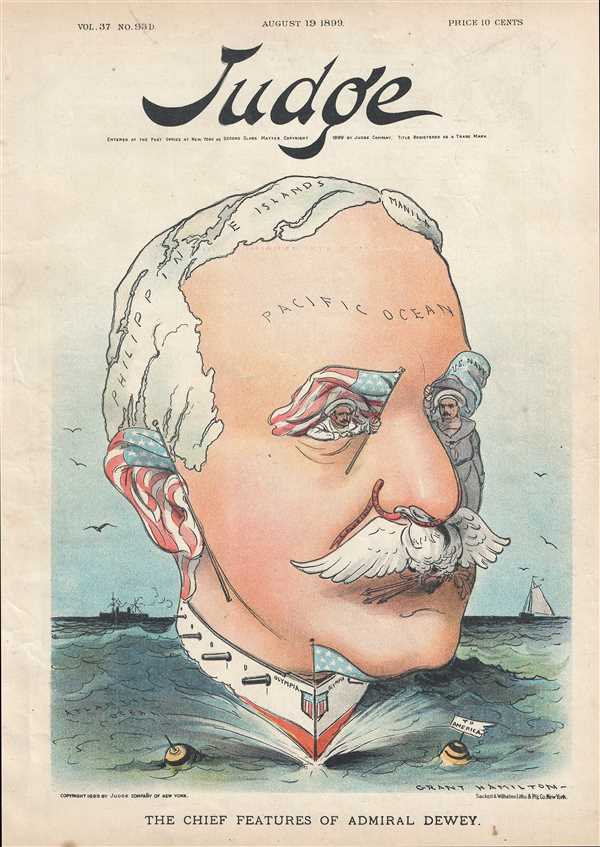1899 Hamilton Political Cartoon Portrait Map of Admiral George Dewey
FeaturesDewey-hamilton-1899
Title
1899 (dated) 13 x 8.5 in (33.02 x 21.59 cm)
Description
When this issue of Judge went to press, Dewey was on his way back to the United States following the successful defeat of the Spanish Navy in Manila Bay during the Spanish-American War. The nation had been gripped by a frenzied fascination with its new war hero, desiring as much information as the press could extract from a man who has gone down in history as incredibly shy and humble. Not given to self-congratulation, this cartoon references the fact that Dewey chose to forego a proposed cross-country tour by rail following his arrival on the West Coast and instead elected to return to the United States via the Indian Ocean, the Mediterranean Sea, and the Atlantic, and arrive in New York City. Admiral Dewey did not understand the nationwide fascination with him and the Battle of Manila Bay because, from his perspective, it had not been a difficult battle. Nonetheless, when Dewey arrived in New York after his six-month journey, he was greeted as a conquering hero by New York Governor Theodore Roosevelt, other dignitaries, and a throng of admirers. A parade in his honor marched down Fifth Avenue four days later and was witnessed by a crowd of over one hundred thousand. Later that year, Dewey mounted a short-lived campaign for president that never truly materialized into a serious attempt. A series of political blunders that offended several different constituencies effectively sidelined his candidacy. Shortly after his failed run, however, he was named president of the newly-established General Board of the Navy Department, a position he held until his death.
This cartoon was drawn by Grant E. Hamilton and published on the cover of the August 19, 1899 issue of Judge.
Cartographer
Grant E. Hamilton (1862 - 1926) was an American artist, illustrator, and political cartoonist. Born in Youngstown, Ohio, Hamilton eventually became the art editor for Judge, a position he held for over twenty years. He is remembered as ab influential political cartoonist and was the creator of the 'full dinner pail' campaign slogan used by President McKinley in the 1896 Presidential Election when he was running against William Jennings Bryan. Hamilton also held the position of chief of the government art bureau during World War I. More by this mapmaker...

